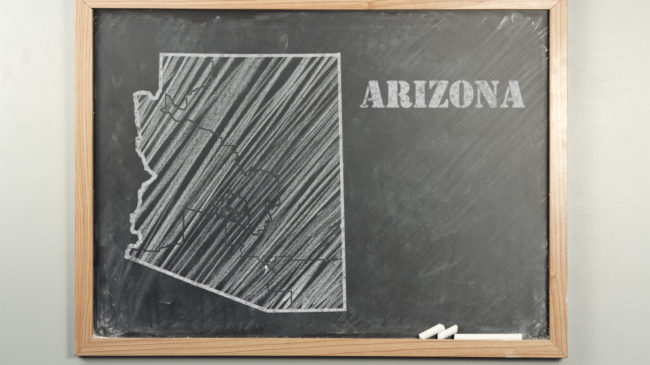As Arizona’s schools adapt to online instruction and try to figure out their short-term plans, the coronavirus-related disruptions on the state’s education system have only just begun. The COVID-19 pandemic’s negative impacts on the economy and tax revenues are going to cause major shortfalls in school district and state budgets, which will make it increasingly crucial for Arizona to pivot toward a more equitable and flexible school funding system that better utilizes every education dollar.
First, there are a number of shortcomings in the main Basic State Aid education funding formula. It is outdated, offers mismatched special education funding, and its lack of targeted funding for low-income students means these students and schools may not get their fair share of resources. But amidst this economic downturn, it’s also important that lawmakers examine every dollar in the funding system, not just those in the main formula. Outside of Basic State Aid, Arizona relies too heavily on non-equalized funding streams that undermine the fair distribution of dollars. Equalized funding aims to reduce funding disparities between wealthy and low-income schools to ensure a local community’s fiscal resources and property tax wealth don’t determine the resources students in those areas receive.
It would disproportionately hurt Arizona’s most disadvantaged students if state leaders make reductions to the main funding formula. Instead, they should reconsider how other revenues can be reallocated. Much of the funding from state grants — such as those for teacher salaries, professional development, and school safety — is over-subsidizing school districts that already have excess local education resources. State lawmakers could collapse these state grants into the main education formula for the sake of equity since formula funding is crucial for poorer districts that can’t access as many local tax dollars.
Additionally, the state should consider playing a bigger role in distributing funding for facilities and capital to ensure that districts are on a more level playing field on this front. In recent years, Arizona has focused on increasing the Basic State Aid’s District Additional Assistance — intended to fund things like capital maintenance, school technology and supplies, and buses — as well as bolstering state grants for new construction to ensure that every school district has fairer access to facilities funding. It’s important that policymakers maintain and strengthen the programs that target scarce facilities funds to the school districts that can’t easily pass bonds because their communities have less wealth.
Lawmakers and educators should also learn from mistakes made during previous economic downturns. After the Great Recession of 2007-2009, school districts that relied most heavily on state revenues were hit the hardest by budget cuts, while other districts were able to offset losses of state funds by increasing local property taxes. In Arizona, this exacerbated per-pupil funding inequities between school districts and generated an unfair variation in local tax rates that led to a series of school-funding lawsuits.
This time around, school finance reforms should be made in order to better account for the existing differences in school districts’ abilities to raise tax revenues so that the state doesn’t force some districts to further fall behind or look for ways to adopt large local tax hikes just to stay on level funding with their neighboring districts. This could eventually include a major shift toward implementing a statewide property tax so that dollars and tax burdens can be more fairly shared between richer and poorer school districts while aiming to reduce local property taxes used to fund schools.
Beyond focusing on equity, school districts should be given ample flexibility with funds so that they can maintain and expand the programs and the staff that are most important for their local situations. Many of the current funding streams that lie outside of the Basic State Aid formula limit school districts’ flexibility to use resources where they think student needs are the greatest — a practice that other states are increasingly recognizing as inefficient and ineffective.
Hard financial times are ahead for all of Arizona and its schools, so lawmakers need to embrace school finance reforms that boost equity and flexibility to ensure the looming economic pain is not being shouldered disproportionately by low-income students and communities.
This column originally appeared in the Arizona Capitol Times.

